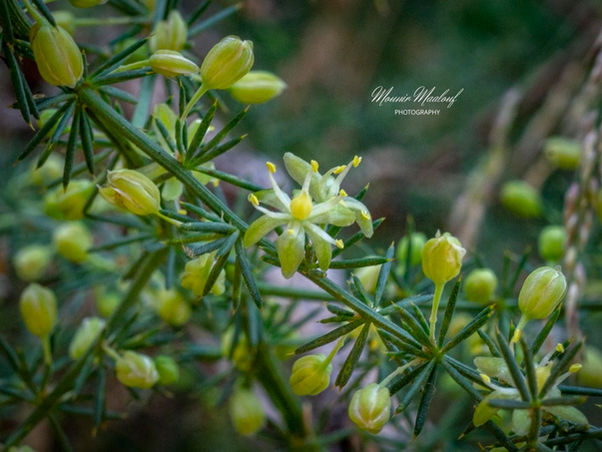Family |
Asparagaceae
Asparagus aphyllus
L.
Asparagus aphyllus L.
(Nouvelle Flore du Liban et de la Syrie, vol. 1, Pl. XCIII nº 4; 1966)
Life-form & habit: Highly branched, flexuous, ascending perennial with rigid, strongly lignified, and grooved stems, exceeding 1 m. Young shoots edible.
Leaves: Reduced to membranous scales up to 6 mm long, bearing a prolonged, subspinescent spur.
Cladodes: Arranged in fascicles of 2–6, persistent, unequal, thick, angular, up to 18 mm, tapering into brownish spines.
Inflorescence & flowers: Dioecious; flowers solitary or paired, with short, nodding pedicels scarcely exceeding the flower, articulated near the middle. Perianth star-shaped, whitish-green, with oblong, 1-nerved, obtuse tepals, nearly free; inner tepals shorter. Stamens subequal.
Fruit: Globose black berry.
Phenology: Flowers from June to September.
Habitat & elevation: Hedgerows, scrublands.
Lebanese distribution: Ct. Saïda, ‘Adeisé, Beirut, Nahr Ghadir, Nahr el-Kelb; Mi. ‘Antoura, Ghazir; Met. Qabbélias, Saghbine; Herm. ‘Aïn Horche, south of Rachaya.
Syrian distribution: Sud. Banias, Dibbine to Hammé.
Native range: Algeria, Baleares, East Aegean Is., Egypt, Greece, Italy, Kriti, Lebanon-Syria, Libya, Morocco, Palestine, Portugal, Saudi Arabia, Sicilia, Spain, Tunisia, Türkey.
Introduced into: Bulgaria







